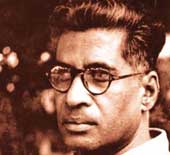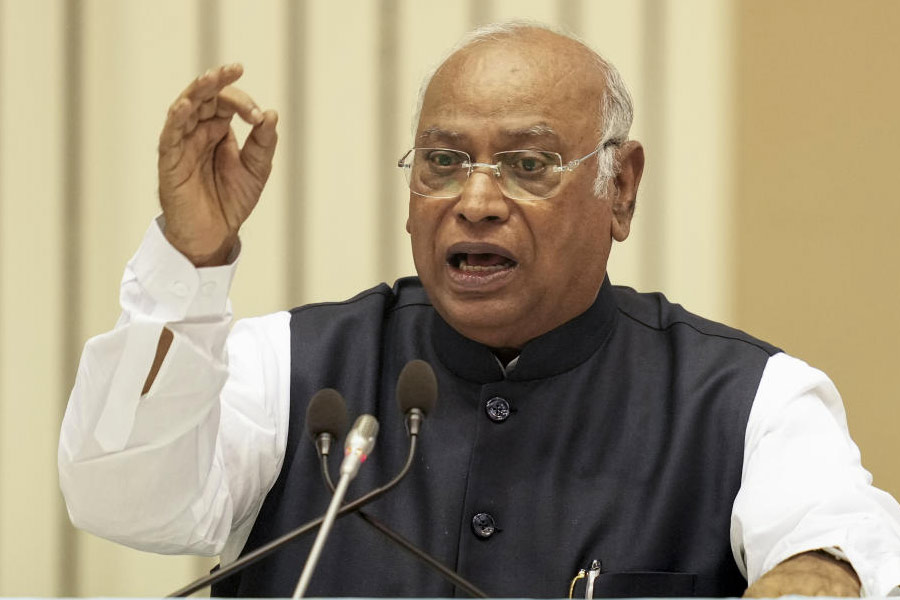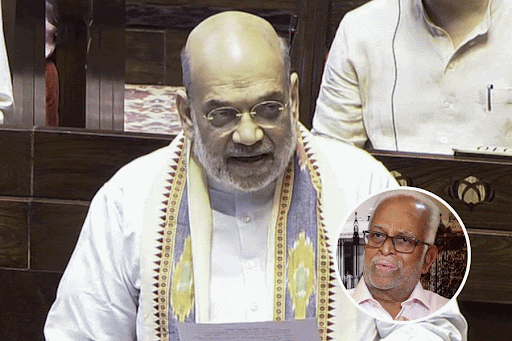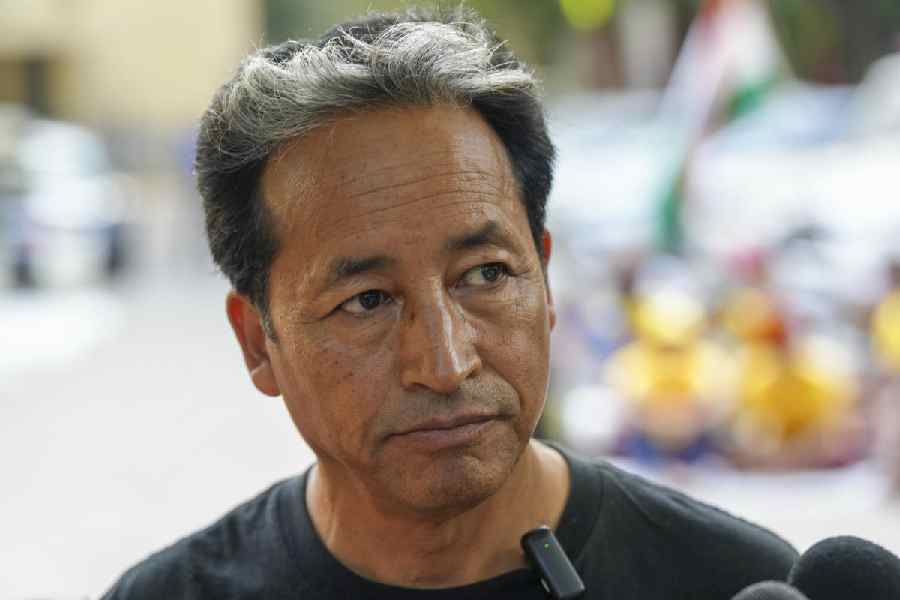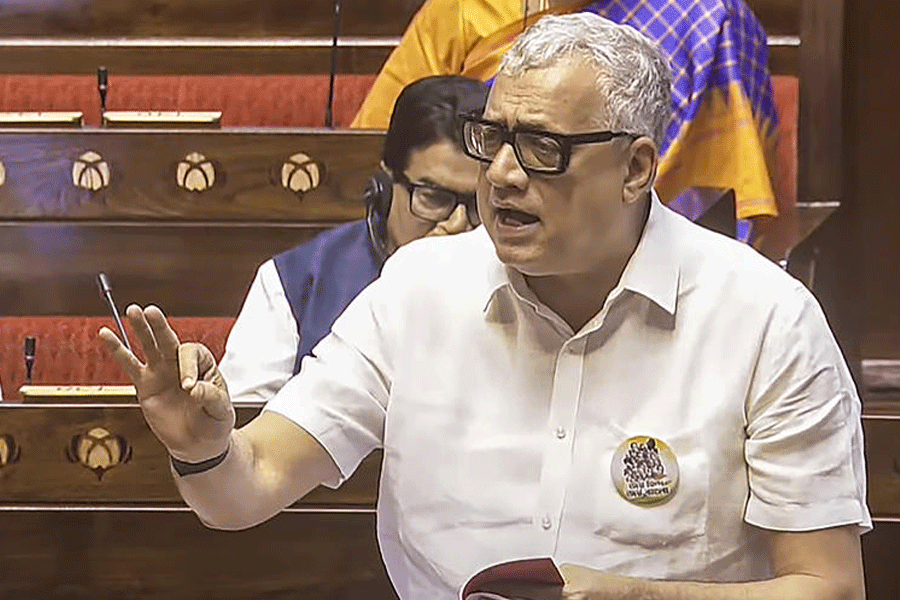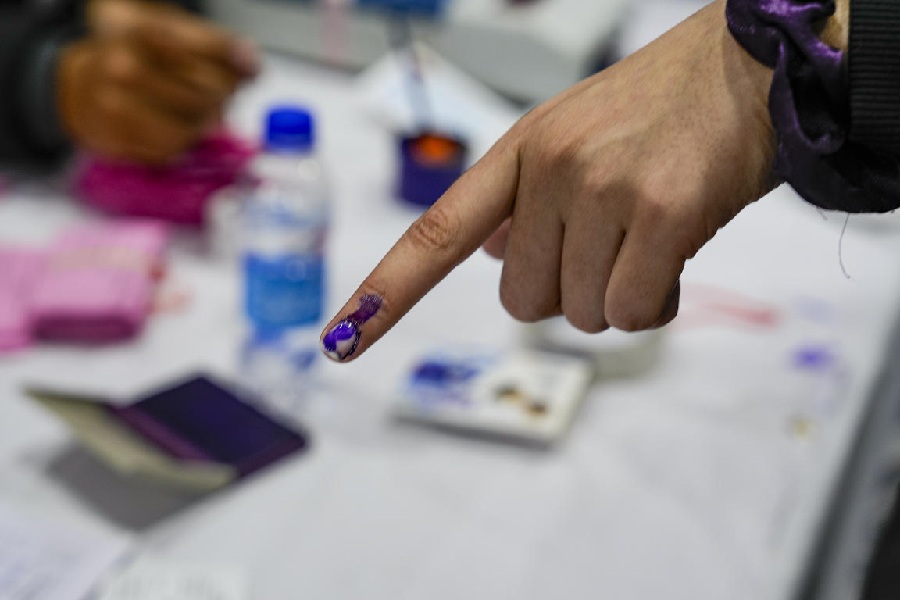 |
Jagdish Prasad Mathur, the BJP stalwart who died the other day, had once confessed in a private conversation that he was, in his college days, a starry-eyed admirer of M.N. Roy. It needs some suspension of disbelief, this leap from being an ardent Royist to the Rashtriya Swayamsevak Sangh. The melange of people who had fallen during this or that phase of their career for the charms of Manabendra Nath Roy in fact constitutes a most unusual phenomenon. Among politicians, one can count Y.B. Chavan, the rugged Maratha, former Union finance minister and deputy prime minister for a brief while; S.R. Bommai, chief minister of Karnataka in the late Eighties — who too died only a few weeks ago — and Brahm Datt, finance and planning minister of Uttar Pradesh at about the same period. The jurist, V.M. Tarkunde, was, till his last breath, another Roy loyalist. So too was the trade union leader, Maniben Kara, granddaughter of Dadabhai Naoroji. The formidable Bengali poet, Sudhindranath Datta, otherwise cynic extraordinary, could not, despite himself, cease to be in awe of Roy’s intellectual prowess.
Journalists did not lag behind either. Devendra Nath Hosali, who edited from Bangalore in the late Forties and early Fifties of the last century that remarkable weekly, Mysindia, with its space evenly divided between politics and literature, never concealed his allegiance to Roy. The one-time editor of The Times of India, Girilal Jain, was an equally effusive Roy worshipper. More than half a century has elapsed since Roy’s passing; curiosity for his life and works has only intensified. From the early Thirties till decades following his death, Roy was a non-person in official communist circles. Even that historiographical exile has now ended.
The heterogeneity distinguishing his loyalists owes a great deal to the heterogeneity of experiences and achievements M.N. Roy’s life was packed with. Son of an indigent Bengali Brahmin who scraped a living by performing priestly chores in households in his run-down village, Narendra Nath Bhattacharya had only a rudimentary early education. He got sucked into the frenzy of the revolutionary movement astir in the first decade of the 20th century. From crude bombs, the ambition of the revolutionaries soon ascended to Mauser pistols and still fancier firearms. At the outbreak of World War I, Narendra Nath, determined to accelerate the pace of national liberation, embarked on global arms shopping. Perilous voyage first to Indonesia, from there in rocky boats to the Mexican shore. At some point during this period, he managed to get an official paper issued in the name of Manabendra Nath Roy — that became his identity for the rest of his life. In Mexico, it was a tough, new surrounding and life was a continuous struggle. Roy, however, was an amazingly quick learner. His pidgin English got polished. He picked Spanish in no time and soon travelled to other languages, including French and German. Work for the underground Mexican communist party was combined with relentless organizational activity for the cause of Indian independence. Launching into journalism, Roy started publishing pamphlets and bulletins at a furious pace. To establish contact with other revolutionaries in exile, he slipped every now and then into the United States of America. Revolutionaries, particularly those living émigré existence, are a quarrelsome lot, prone to logic-chopping at strange levels of abstraction. Roy was excellent in the art.
October 1917, the Soviet revolution, suddenly an altogether different canvas. Roy turned up in Moscow and was soon an important functionary in the Communist International, in fact its emissary when the Communist Party of India was formed in distant Tashkent. He also slunk in and out of various countries in Europe to spread the message of the Comintern, leaving behind everywhere a trail of controversies; there was still a growing, if grudging, respect for his uncanny ability to expiate on exciting new issues in the philosophy and praxis of dialectical materialism. Back in Moscow, it was the hour to demonstrate even further daring, an open debate on the colonial question. He challenged Lenin’s thesis advocating a temporary patch-up of relations with domestic feudal elements to fight the colonial occupiers in Asia. M.N. Roy would have none of it, and submitted a lengthy supplementary. He was outvoted, but managed to retain his position in the Comintern secretariat. A queering of the pitch nonetheless took place. Sent to China to offer counsel and advice to the comrades engaged in a full-scale revolutionary warfare in hills and valleys in the northern and western parts of the country, Roy chose to describe the exploits of Mao’s Eighth Army as social banditry. The price paid for this mis-judgment was heavy. He was withdrawn from China, and felt increasingly isolated. It was not very long before he was chucked out of both the Soviet Union and the Comintern.
A reversal of fate, but he was not going to take it lying down. Roy thought he would return to India and plunge himself into the freedom-cum-revolutionary movement. The British had other ideas. He was arrested as soon as he landed in Karachi in 1931 and detained without trial for the next few years. On release, conforming to current idiom, he donned a Bengali dhoti and wore aslant a Gandhi cap to pontificate at sessions of the All India Congress Committee. To no avail — he was out of touch with the country’s affairs for much too long and failed to create a niche for himself in the Congress. The communist party, firmly tied to the apron strings of the Comintern, would not touch him either. He founded the Radical Democratic Party, attracting a small crowd of acolytes with a thoughtful bent of mind. The essential mass base was however lacking. A matter of some irony, Roy realized the perils of a Nazi victory in World War II ahead of the Communist Party of India and suggested active collaboration with the British war effort. That was small consolation. What was worse, he had to share, along with the communists, the wrath of the Indian middle class for siding with those who kept the country under subjugation.
Roy decided to leave the formal political arena. It was another role henceforth, that of the philosopher-king: writing, thinking, discussing with friends, even more writing. There was, after a while, a further transition, from communism to radical humanism. He did not exactly disown Marxist premises, but groped for an alternative process whereby to fill the world with the milk of humanism. How his quaesitum differed from Marx’s concept of a classless society was left beautifully vague. Equally remarkable, on Stalin’s death in 1953, M.N. Roy wrote two articles extolling the contributions of the Soviet mohican to the cause of humanity and global peace. Stalin was perhaps not a “good” man, but he was, Roy insisted to the bewilderment of his admirers, a “great” man nonetheless, the architect of the first successful socialist experiment in the world.
Such enigmas and other pluses and minuses considered together, he was a ‘compleat’ man. He loved good food, good wine, good literature, the company of women. Victor Serge’s story of a late night party in Paris where Roy turned up escorting a young woman, who apparently wore nothing under her shimmering, all-too-transparent evening dress, was most probably a case of sour grapes; it was one of Roy’s tenets that everybody deserved to enjoy the elegant things in life.
Roy himself died soon after Stalin did. And as with Stalin, Roy too proved the wisdom of that particular Marxist precept: not heredity, it is environment which makes a man. Offspring of a Brahmin priest as poor as a church mouse in an obscure Bengal village, Narendra Nath Bhattacharya transformed himself into M.N. Roy, the towering political philosopher whose CV included membership of the presidium of the Communist International.
News of the demise of a BJP leader has taken one far afield.

